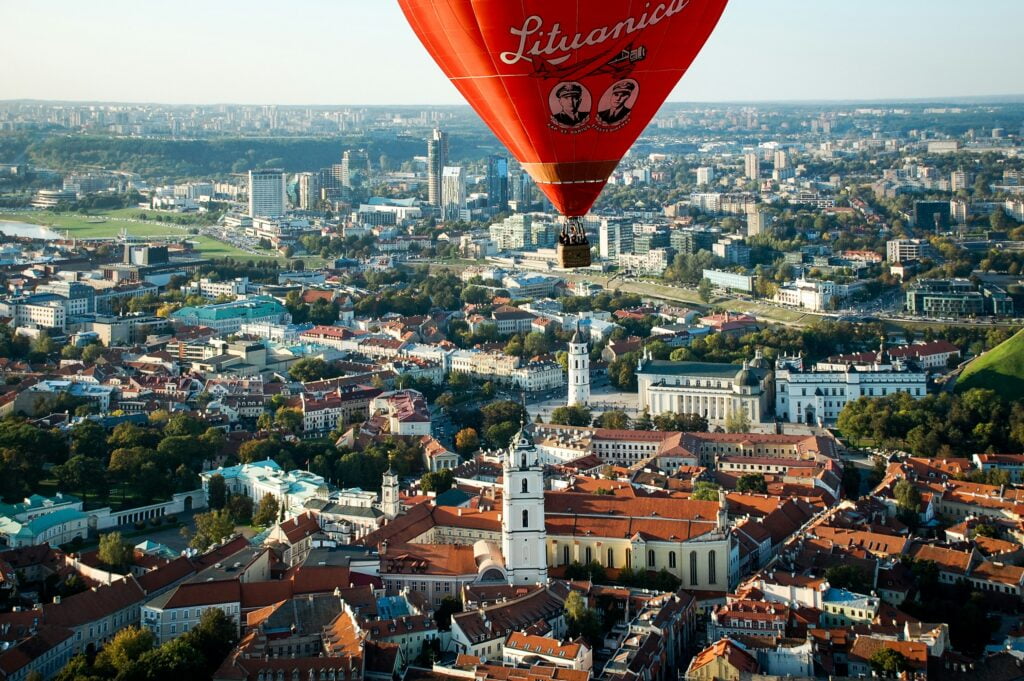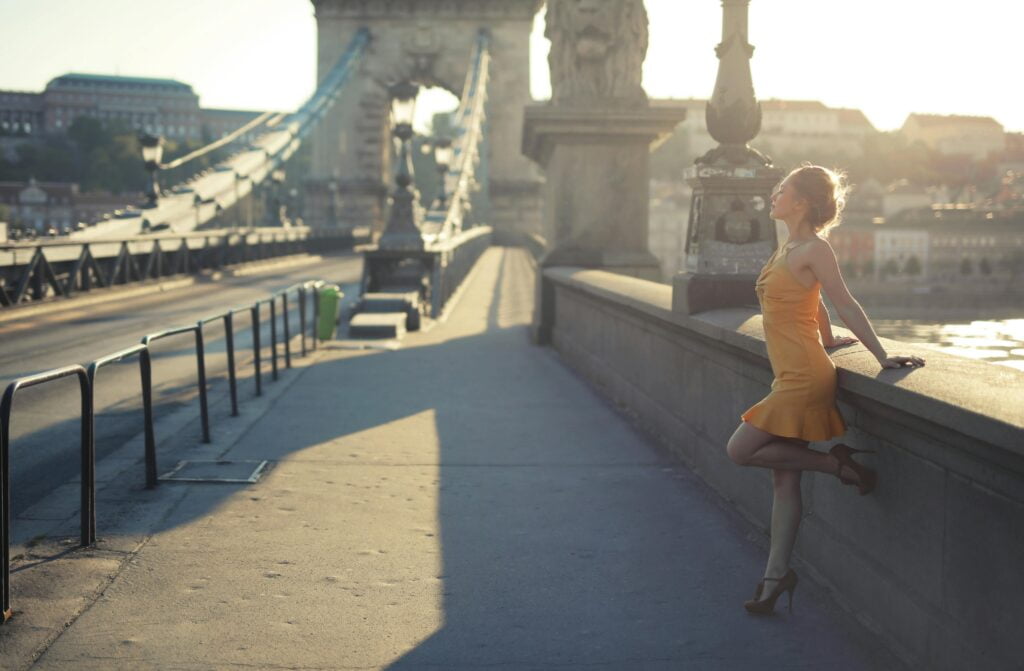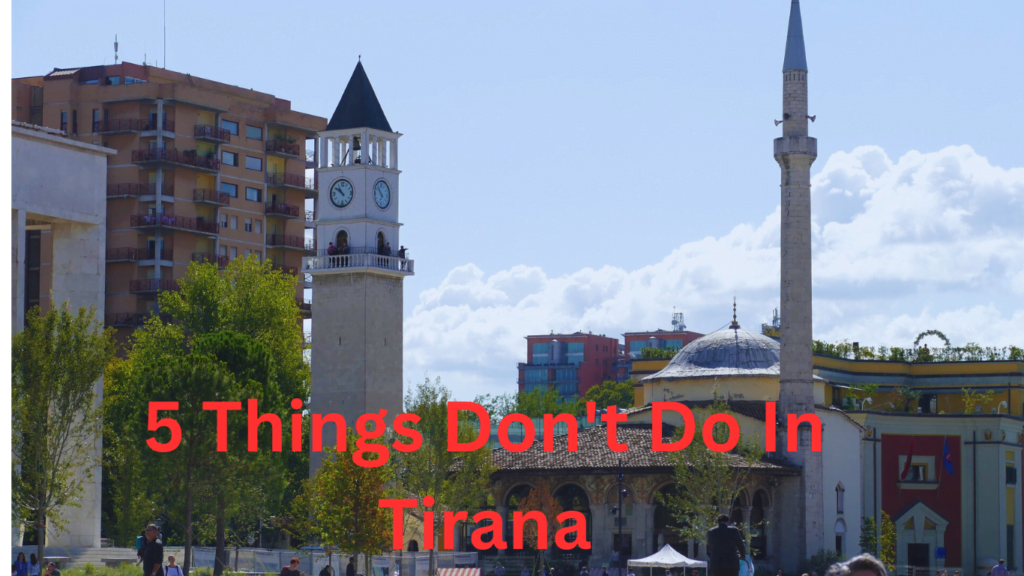Welcome to this complete Vilnius, Lithuania travel guide, the city where old meets new, nestled in the heart of Europe. Vilnius, the capital of Lithuania, is a hidden gem waiting to be discovered—a city that’s rich in history yet brimming with a vibrant contemporary culture. Its cobblestone streets whisper tales of grand dukes, medieval battles, and the enduring spirit of the Lithuanian people. Here, the past and present seamlessly blend into a tapestry of architectural marvels, from Gothic to Renaissance, Baroque to neoclassical. This city has a unique flavor, a blend of its Baltic roots, the whispers of the Soviet era, and a progressive European vibe. The locals, with their innate warmth and multilingual abilities, add a special charm to the city’s ambiance. Whether you’re a history buff, a culture vulture, or a lover of nature’s splendors, Vilnius is a city that promises to captivate your senses. Without further ado, we are diving into the heart of this captivating beauty.
Vilnius Town Hall
Our journey through Vilnius continues as we head towards the Vilnius Town Hall, a significant symbol of the city’s administrative and cultural life. This grand structure, dating back to the 15th century, boasts a rich history. It has witnessed the ebb and flow of the city’s fortunes, playing host to markets, theater performances, and even royal festivities. The architectural beauty of the building is a testament to the neoclassical style prevalent during the period of its last reconstruction in the 19th century. Its elegant facade and symmetrical layout are a sight to behold. Fast forward to the present day, and the Town Hall has transformed into a vibrant hub for culture and celebration. From art exhibitions to concerts, film festivals to city fairs, it’s a place where the spirit of Vilnius comes alive. The Vilnius Town Hall, a testament to the city’s vibrant cultural life, stands as a beacon of the city’s historical past and its dynamic present.
Gediminas Castle Tower
Our first stop is the Gediminas Castle Tower, a symbol of Vilnius and Lithuania. This majestic structure, standing tall and proud, carries tales from as far back as the 14th century. Named after Grand Duke Gediminas, the tower is a testament to the strategic brilliance of the times. Its position on the hilltop was not only for an impressive vista but also for monitoring potential threats that could approach from any direction. Imagine the hustle and bustle of yesteryears, the guards on vigil, the echoing sound of hooves against cobblestones. The tower was not just a stronghold but a beacon of defense, a symbol of power, and an architectural marvel of the medieval period. Today, it invites visitors to climb its winding stairs and soak in the panoramic view of Vilnius, from the red roofs of the Old Town to the gleaming modern skyscrapers. The view is nothing short of breathtaking. From this height, one can truly appreciate the beauty of Vilnius. From the heights of Gediminas Castle Tower, we now descend into a darker chapter of Lithuania’s history at the Museum of Genocide Victims.
Genocide Victim Museum
Located in the former KGB headquarters, this museum is a solemn reminder of the Soviet occupation, a period that scarred the nation deeply. It houses chilling exhibits of espionage, political persecution, and resistance, starkly portraying the horrors of the regime. The museum also features the former KGB prison where thousands of Lithuanians were interrogated, tortured, and executed. Walking through these haunting corridors, one can’t help but feel a deep sense of awe and respect for the victims who suffered and the heroes who resisted. This museum isn’t just about recounting the past; it’s about understanding the indomitable spirit of Lithuania, a nation that refused to be broken, a people who stood resilient in the face of adversity. As we leave, we carry with us a profound appreciation for the courage and resilience that define Lithuania. The Museum of Genocide Victims: a poignant reminder of Lithuania’s resilience.
Cathedral Square
Next, we’re stepping back in time as we wander through the cobblestone streets of the Old Town. The Old Town, or Senamiestis, nestled in the heart of Vilnius, is a living testament to the city’s rich history, boasting architectural styles from Gothic to Renaissance, Baroque to Neoclassical. Each building here narrates a unique chapter of Vilnius’s past. As we stroll, we find ourselves at Cathedral Square, the central hub of Vilnius. The magnificent Vilnius Cathedral dominates, with its pristine white facade and imposing bell tower leaving you in awe. A symbol of Lithuanian resilience and national pride, it stands proudly, housing a treasure trove of art. Beneath it are crypts that hold notable Lithuanian figures, a reminder of the country’s rich past. The square is more than just a historical landmark; it’s a vibrant hub with locals and tourists enjoying concerts and games on a giant outdoor chessboard. It’s where past and present exist together. As we continue our journey, we’re reminded of the enduring spirit of Vilnius Senamiestis, a place where every corner whispers of the past.
Presidential Palace
Next, we are off to the Presidential Palace, the official residence of the President of Lithuania. This grand edifice, tucked away in the heart of Vilnius, carries with it a rich tapestry of the nation’s history. The Presidential Palace has been the epicenter of political power in Lithuania for centuries, housing various rulers and leaders throughout its existence. The palace’s architectural elegance is a sight to behold; its classical style, characterized by symmetrical simplicity and grandeur, is a reflection of Lithuania’s past and present. Today, the palace is more than just an architectural marvel; it’s the nerve center of Lithuania’s political life. It’s here where the President carries out official duties, meets with foreign dignitaries, and hosts state ceremonies. As we gaze upon its majestic facade, we’re reminded of the profound influence this building has had on Lithuania’s journey as a nation. The Presidential Palace is a symbol of Lithuania’s political life.
Užupis District
Now, we’re heading to Užupis District, the Bohemian heart of Vilnius. A quirky neighborhood brimming with character, Užupis is a self-declared independent republic, complete with its own constitution, president, and even an army of around 12. This artistic enclave is a canvas of street murals, quirky sculptures, and galleries, reflecting the free spirit of its inhabitants. It’s not uncommon to stumble across impromptu concerts or poetry readings while exploring its narrow, winding lanes. Just a stone’s throw away, the red brick facade of St. Anne’s Church, a Gothic masterpiece, stands tall. This church has graced Vilnius with its presence for over five centuries. Its flamboyant design is a feast for the eyes. Legend has it that Napoleon was so smitten by its beauty, he wanted to take it back to his Paris in the palm of his hand. Užupis, a district that wears its heart on its sleeve.
National Museum of Lithuania
Now, let’s step into the past at the National Museum of Lithuania. The oldest museum in the country, this is not just a museum; it’s a time capsule, a guardian of the nation’s cultural heritage. Its mission is to collect, preserve, research, and promote the tangible and intangible history of Lithuania. The museum’s vast collection spans from prehistoric times to the present day, offering an immersive journey through the country’s history. As you navigate its halls, you’ll encounter artifacts from the Stone Age, medieval weaponry, folk costumes, and contemporary art. Each exhibit is a story, a memory, a piece of the intricate puzzle that is Lithuania. This museum is not only a place for history buffs but also an educational hub for visitors of all ages. Here, you can learn about the country’s past, understand its present, and envisage its future. The National Museum of Lithuania: a treasure trove of the country’s history, where every artifact tells a tale.
Gediminas Avenue
Our journey continues down Gediminas Avenue, the main artery of Vilnius, stretching from the old to the new. This bustling boulevard is more than just a thoroughfare; it’s the city’s heartbeat, pulsating with energy, history, and culture. A promenade along Gediminas Avenue is like stepping into a living, breathing storybook, where every corner tells a tale. On one side, you’ll see modern structures standing shoulder to shoulder with grand old buildings, each a testament to the city’s resilience and growth. On the other side, you’ll find a smorgasbord of cafes, boutiques, and art galleries, each offering a glimpse into the city’s vibrant soul.
From the hustle and bustle, we step into the hallowed halls of Vilnius University. Founded in the late 16th century, it stands as one of the oldest and most esteemed universities in Europe. The University is a testament to the city’s rich intellectual heritage, a place where minds have been nurtured, ideas sparked, and futures shaped for centuries. Its majestic buildings adorned with intricate artwork and its tranquil courtyards offer a peaceful retreat from the city’s busy streets. It’s a place where the past and the present coexist, where the echoes of ancient scholar’s whisper in the wind, and the dreams of tomorrow’s leaders take flight.
And so, we return to Gediminas Avenue, the city’s vibrant thoroughfare, a place where history meets modernity and culture meets commerce. Gediminas Avenue: where Vilnius pulses with life.
Bernardine Gardens
Next, we’re off to the tranquil Bernardine Gardens, a green oasis in the city nestled in the heart of Vilnius. This verdant retreat offers a chance to unwind amidst nature’s splendor, away from the hustle and bustle. The Bernardine Gardens are steeped in history, dating back to the 16th century when they were part of the Bernardine monastery. Over centuries, they have transformed and evolved, mirroring the changing times and tastes. Today, they are a beautifully landscaped park home to over 500 different plant species, a musical fountain, and a colorful flower carpet that changes with the seasons. Just a stone’s throw away from the gardens, we find the Three Crosses Hill or “Trijų Kryžių kalnas,” a significant monument with a story as fascinating as the view from its peak. Legend has it that seven Franciscan friars were beheaded on this hill, and to honor their memory, three crosses were erected. Over time, the crosses have come to symbolize the resilience and unity of the Lithuanian people. Whether you’re a history buff, a nature lover, or simply someone in search of tranquility, these two spots offer an experience that’s both enriching and calming. So, stroll through the lush gardens, climb up the hill, and let the panoramic views of Vilnius take your breath away. Bernardine Gardens and Three Crosses Hill: where nature and history intertwine.
Vilnius TV Tower
Finally, we’re heading up to the Vilnius TV Tower, the tallest structure in Lithuania, rising majestically over the city. This engineering marvel has a history as rich as the panoramic views it offers. Constructed during the Soviet era, the tower’s tale is one of resilience and resistance. It played a pivotal role in Lithuania’s fight for independence in the early ’90s, becoming a beacon of national spirit. In fact, it was here that the first shots of the independence movement were heard, forever etching the tower’s significance into the country’s narrative. Today, the tower stands as a symbol of Lithuania’s unyielding spirit, its resilience against the odds. The observation deck at the top offers a stunning view of the city, a sight that would make anyone’s heart soar. The Vilnius TV Tower: a testament to Lithuania’s resilient spirit.
The Journey Recap
As our journey through Vilnius comes to a close, let’s recap the places we visited. We started off at Gediminas Castle Tower, a symbol of the city’s resilience and a testament to its historical richness. We then strolled through the charming Old Town’s cobblestone streets and admired the grandeur of Cathedral Square, the heart of Vilnius. We crossed into the vibrant Užupis, the Bohemian heartland, and marveled at the architectural beauty of St. Anne’s Church. We then sauntered down Gediminas Avenue, the city’s main artery, and explored Vilnius University, a beacon of knowledge and enlightenment. We found tranquility in the lush Bernardine Gardens and climbed the Three Crosses Hill (Trijų Kryžių kalnas) for a breathtaking panorama of the city. Finally, we looked up in awe at the Vilnius TV Tower, a modern symbol of national pride.
Thank you for joining us on this journey through Vilnius, a city where history, culture, and beauty blend seamlessly together.





